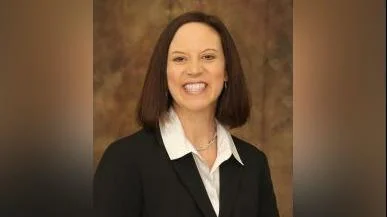Chi Board of Health issued the following announcement on Aug. 15.
Mike Arnold called himself "Iron Man" last May.
It was a joke, with some truth attached.
He was in a hospital bed at CHI Health Nebraska Heart in Lincoln where a high-tech gadget called a left ventricular assist device (LVAD) had been implanted in this chest. It was a life-saving surgery for Arnold, who was near death due to severe heart failure.
Now a machine pumps oxygen-rich blood to his body, powered by battery packs Arnold carries with him at all times.
The apparatus might make Arnold feel a bit mechanical, but "Iron Man" had long been his mindset.
A military veteran who served in the Gulf War, he also had three close calls during 20-plus years as an Omaha paramedic and firefighter — including a roof collapse and a gas explosion. In his off hours, Arnold built decks and coached hockey for his three sons. His days were jam packed with activity.
"If I wasn't moving or doing something, I'd go crazy," Arnold said.
With that hard-charging attitude, he fought heart failure caused by a virus for more than 10 years. A pacemaker kept him going, but Arnold eventually grew so fatigued he was sleeping 16 hours a day and getting winded walking from the driveway to front door.
"Either my meds are off or I'm on the downslope," he told his wife.
After being admitted to Nebraska Heart for evaluation, Arnold's condition quickly deteriorated. Not only was his heart in dire shape, his liver and kidneys were failing. "I literally thought I was dying that night," he said.
"After all I've been through, you can't kill me," Arnold joked. "I'm indestructible."
The heart failure team at Nebraska Heart rushed Arnold into surgery for an emergency balloon pump which would keep his heart going until he could have LVAD surgery.
It would be a landmark for Nebraska Heart as its 50th LVAD procedure and Nebraska Heart's first with a newer LVAD called the Heartmate 3, which was approved by the FDA earlier this year.
These devices are implanted in patients who have reached end-stage heart failure. The battery operated mechanical pump helps the left ventricle, which is the heart's main pumping chamber, circulate blood to the rest of the body.
Cardiovascular and Thoracic Surgeon Sagar Damle, MD, performs the procedure 20 to 30 times a year and leads the Nebraska Heart surgical program for heart failure patients who may be LVAD candidates.
He said the LVAD implant is a somewhat complicated procedure because most patients have had previous heart procedures, such as valve replacements or bypasses.
"In that sense, it makes the surgery a little more complicated, but the real complication and the difficulty comes in the patient's management after surgery," Dr. Damle said. "It's generally a very stressful operation for a very sick group of patients."
Arnold's case was a bit different, because it was a virus which weakened his heart and he hadn't had procedures other than a pacemaker. Within 24 hours of surgery, he was up walking. Eight days later, he was home. Just three months after surgery, Arnold traveled to Denver for a golfing vacation with friends."Most people are barely getting back to life, let alone golfing 18 holes with their buddies," said Kelly Stutzman, RN, LVAD coordinator.
In fact, the national average recovery time for a patient receiving a LVAD implant is 23 days. At Nebraska Heart, the average is 13 days — a feat Dr. Damle said is accomplished by the team's pre-surgery approach.
"The most important thing to understand about these surgeries is that it's not about the surgeon or the pump," Dr. Damle said. "It's about the whole team. Everyone on the entire team at Nebraska Heart is focused on making sure the patient has the best outcome — from our preoperative nursing care to the post-op ICU care to the nurses, the anesthesiologist to the cardiologist to the social workers and our therapists.
"It's totally a team procedure and not one of those procedures that depends highly on the surgeon. It's a situation where everyone on the team is important and everyone acts as a team," he said.
After a successful LVAD implant, patients usually have an immediate feeling of being able to breathe more easily and have more energy. Depending upon the each patient's situation, the LVAD procedure can be either a bridge to a heart transplant or therapy in and of itself.
Arnold is already looking a year ahead. Either his heart will have repaired itself – an unusual but in his case possible scenario — or he'll become a candidate for a heart transplant.
Of the Nebraska Heart team, Arnold said: "I owe them my life."
He's not one to give up.
"After all I've been through, you can't kill me," he joked. "I'm indestructible."
Original source can be found here.

Source: Chi Board of Health



 Alerts Sign-up
Alerts Sign-up